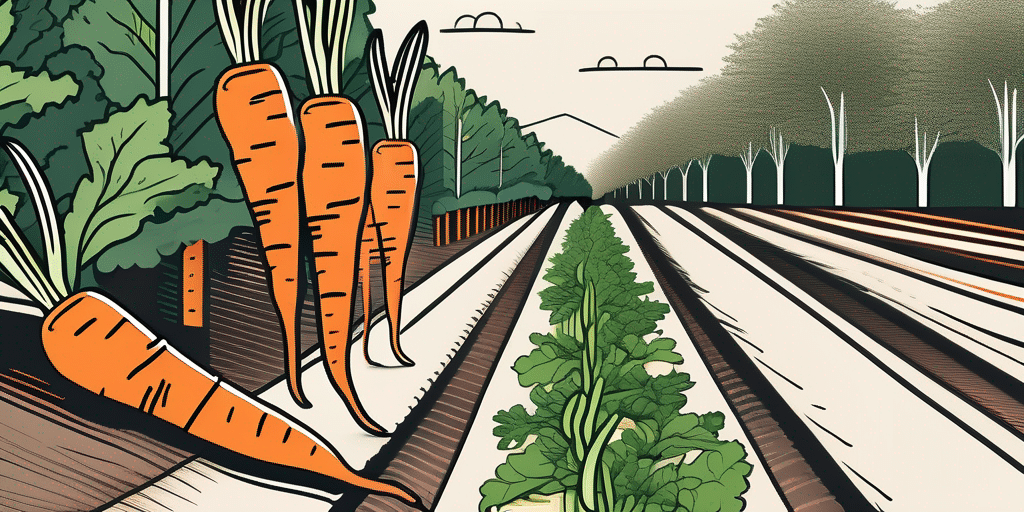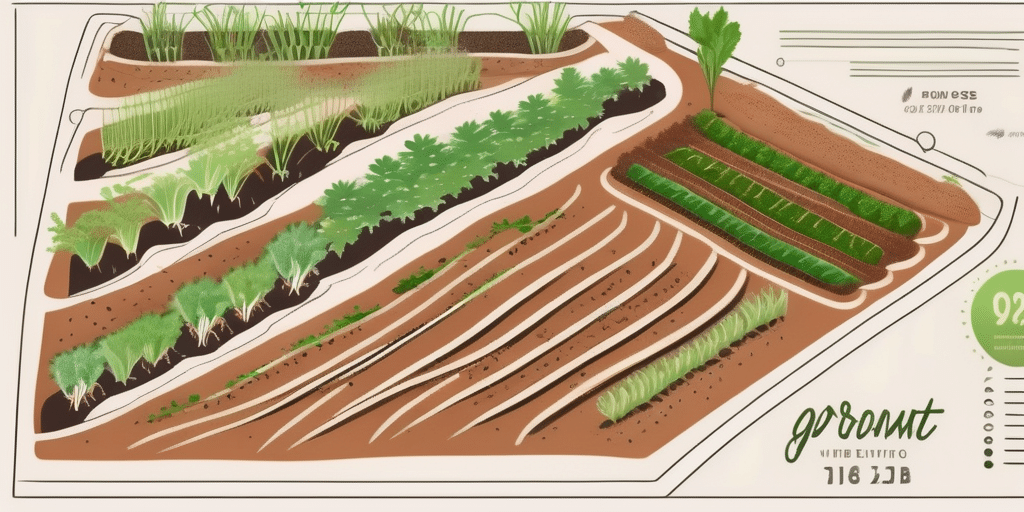Carrots are one of the most versatile and popular vegetables to grow in Virginia. They are not only delicious, but they are also packed with essential vitamins and minerals. The Bolero carrot variety is particularly well-suited for Virginia’s climate and soil conditions. In this article, we will explore when to plant Bolero carrots in Virginia and provide step-by-step guidance on how to grow them successfully.
Climate & Hardiness Zones in Virginia
Before planting any vegetables, it’s important to understand the climate and hardiness zones in your area. In Virginia, the state is divided into three main hardiness zones: Zone 6, Zone 7, and Zone 8. These zones indicate the average minimum winter temperatures and help determine the suitable planting and harvesting times for various crops.
According to the United States Department of Agriculture (USDA), Zone 6 includes parts of northern Virginia, with average minimum temperatures ranging from -5°F to 0°F. Zone 7 covers most of the central and southern parts of the state, with average minimum temperatures ranging from 0°F to 10°F. Zone 8 encompasses the southeastern coastal areas, with average minimum temperatures ranging from 10°F to 20°F.
Understanding the specific hardiness zones in Virginia is crucial for successful gardening. Zone 6, with its colder temperatures, is suitable for crops like kale, broccoli, and Brussels sprouts that thrive in cooler conditions. In Zone 7, gardeners can enjoy a longer growing season, making it ideal for tomatoes, peppers, and squash. Zone 8, with its milder winters, is perfect for growing heat-loving plants such as okra, sweet potatoes, and watermelon.
When it comes to Bolero carrots, they are well-adapted to the climate and soil conditions in all three hardiness zones in Virginia. This variety thrives in cool weather and can tolerate light frost, making it ideal for spring and fall planting.
When to Plant Bolero Carrots in Virginia
Timing is crucial when it comes to planting Bolero carrots in Virginia. To achieve the best results, here are some general guidelines:
- For spring planting: In Zone 6, start planting Bolero carrots outdoors in early to mid-April. In Zone 7, begin planting in mid-March to early April. In Zone 8, you can start planting as early as late February.
- For fall planting: In Zone 6, start planting Bolero carrots outdoors in late July to early August. In Zone 7, begin planting in late June to mid-July. In Zone 8, you can start planting as early as mid-June.
It’s important to note that these are general guidelines, and the exact planting dates may vary depending on the specific conditions in your area. Factors such as soil temperature, weather patterns, and frost dates can influence when you should plant your carrots.
Before planting, ensure that the soil is well-drained and free from rocks, clumps, or debris. Carrots prefer loose soil that allows them to grow straight and develop properly. Consider adding organic matter, such as compost or well-rotted manure, to improve soil structure and fertility.
When preparing the soil for planting Bolero carrots, it’s beneficial to perform a soil test to determine its pH level and nutrient content. Carrots thrive in slightly acidic soil with a pH range of 6.0 to 6.8. If needed, you can adjust the soil pH by adding lime to raise it or sulfur to lower it.
Additionally, Bolero carrots require consistent moisture throughout their growth period. Consider installing a drip irrigation system or soaker hoses to provide a steady supply of water to the plants. Mulching around the carrot plants can also help retain soil moisture and suppress weed growth.
How to Grow Bolero Carrots in Virginia
Growing Bolero carrots in Virginia requires attention to detail and proper care throughout the growing season. Follow these step-by-step instructions to ensure a successful harvest:
- Prepare the soil: Begin by preparing the planting area. Clear the soil of any weeds or debris and loosen it to a depth of at least 8 inches. Adding compost or organic matter can help improve soil fertility and overall plant health.
- Sow the seeds: Follow the instructions on the seed packet for proper spacing and depth. Generally, sow carrot seeds about 1/4 to 1/2 inch deep and space them 2 to 4 inches apart. Consider using a ruler or a planting line to ensure even spacing.
- Provide consistent moisture: Carrots require consistent moisture for successful germination and growth. Water the planted area immediately after sowing the seeds and continue to water regularly to keep the soil moist. Avoid overwatering, as it can lead to rot or disease.
- Thin the seedlings: Once the carrot seedlings emerge, thin them out to provide adequate space for each plant to grow. Carefully remove weaker or overcrowded seedlings, leaving the strongest ones spaced according to the seed packet instructions.
- Control weeds: Weeds can compete with carrots for nutrients and moisture. Regularly weed the planting area, taking care not to disturb the growing carrot roots. Consider using mulch to suppress weed growth and conserve soil moisture.
- Monitor pests and diseases: Carrots in Virginia can be susceptible to pests such as carrot rust flies, aphids, and nematodes. Inspect the foliage regularly and take appropriate measures if you notice any pest activity. Similarly, be on the lookout for diseases like carrot leaf blight or powdery mildew.
- Harvesting Bolero Carrots: Bolero carrots are usually ready for harvest within 55 to 70 days after planting, depending on the specific variety and growing conditions. Pay attention to the size and color of the carrot roots. Once they reach the desired size (typically 1-1.5 inches in diameter), gently loosen the soil around the roots and carefully pull them out. Enjoy the fresh taste of homegrown Bolero carrots!
Now that you have the basic steps for growing Bolero carrots in Virginia, let’s dive deeper into some additional tips and tricks to maximize your carrot harvest:
1. Soil pH: Carrots prefer a slightly acidic soil with a pH level between 5.5 and 6.8. Test your soil’s pH using a soil testing kit, and if necessary, amend it with lime to raise the pH or sulfur to lower it. Maintaining the right pH level will ensure optimal nutrient uptake by the carrot plants.
2. Fertilization: While carrots don’t require heavy fertilization, incorporating a balanced organic fertilizer into the soil before planting can provide essential nutrients. Avoid using high-nitrogen fertilizers, as they can promote excessive foliage growth at the expense of root development.
3. Companion planting: Consider planting carrots alongside companion plants that can help deter pests or enhance growth. Some beneficial companions for carrots include onions, leeks, and chives, which can repel pests like carrot flies. Additionally, planting radishes alongside carrots can help break up the soil and create space for the carrot roots to grow.
4. Season extension: To extend the carrot-growing season in Virginia, consider using row covers or cold frames. These protective structures can help shield the plants from frost and extend the harvest window. Remember to remove the covers during warm periods to prevent overheating.
By implementing these additional tips, you’ll be well on your way to growing a bountiful crop of Bolero carrots in your Virginia garden. Happy gardening!
Frequently Asked Questions
Here are some common questions that gardeners often ask about growing Bolero carrots in Virginia:
- Q: Can I grow Bolero carrots in containers?
A: Absolutely! Bolero carrots can be successfully grown in containers as long as the container is deep enough to accommodate the long roots. Choose a container that is at least 12 inches deep and fill it with well-draining potting soil. Place the container in a sunny location and water regularly. - Q: How do I store harvested Bolero carrots?
A: After harvesting Bolero carrots, remove any leaves or foliage and gently brush off excess soil. Store the carrots in a cool and dark place, such as a root cellar or refrigerator. Alternatively, you can store them in damp sand or sawdust to help retain moisture. - Q: Are Bolero carrots resistant to pests and diseases?
A: Bolero carrots have some resistance to carrot rust flies. However, they can still be affected by other pests and diseases common to carrots. It’s important to regularly monitor your carrot plants and take appropriate measures if you notice any pest activity or signs of disease.
By following these guidelines and providing the necessary care, you’ll be rewarded with a bountiful harvest of delicious Bolero carrots. Enjoy the satisfaction of growing your own organic vegetables and savor the fresh flavors straight from your garden!
Join Our Gardening Community
Ready to take your gardening skills to the next level? Subscribe for free to How to Grow Everything and learn how to build the garden of your dreams! Whether you’re planting Bolero carrots in Virginia or any other crops, we provide personalized gardening advice tailored to your location, grow zone, and experience level. Our family is dedicated to helping you grow, with the best gardening tips and special offers delivered straight to your inbox. No spam, just pure gardening gold. Subscribe today and join a community passionate about gardening, 100% free.






